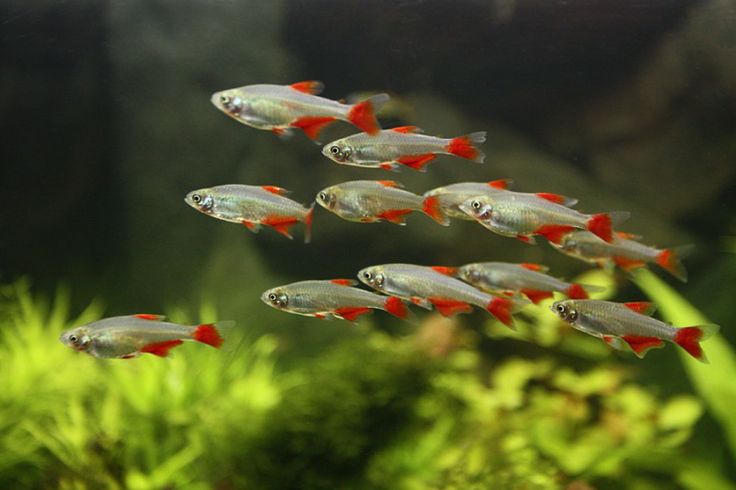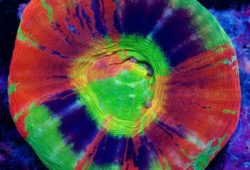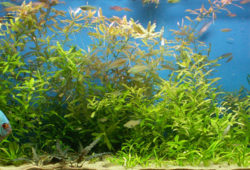Schooling Fish for a 10-Gallon Aquarium
The article gives you information on Schooling Fish for a 10-Gallon Aquarium. If you buy the right fish for a small aquarium, they will be happy, healthy and easy to keep. Not all fish are suitable for a 10-gallon tank though, so choose carefully.

For a variety of reasons, the 10-gallon aquarium is the smallest aquarium casual hobbyists should ever buy. 10-gallon tanks are just about big enough to provide stable water conditions, and contain enough space for a good variety of tropical fish to do well. Smaller tanks fail on both these counts, and are best avoided.
But even though a 10-gallon aquarium can be worthwhile, it is still too small for most of the tropical fish on sale. Things like angelfish, blue gouramis and suckermouth catfish cannot be kept in tanks this small, and nor, incidentally, can goldfish. Choosing fish for a 10-gallon aquarium is a bit of an art, but done properly, you’ll find the results much more rewarding that simply buying the first tropical fish you come across.
Why No Smaller?
A tank this small has three main shortcomings. Firstly, there isn’t enough space for territorial fish to feel comfortable, and this means aggressive things like dwarf cichlids are likely to harass their tankmates. So while a 10-gallon tank might be used as a home for a breeding pair of cockatoo cichlids (Apistogramma cacatuoides), adding any other fish would be risky.
Secondly, there isn’t enough swimming space for very active species such as zebra danios (Danio rerio) and swordtails (Xiphophorus hellerii). While these fish would be good choices for 20 or 30-gallon tanks, they won’t feel settled in a smaller tank, and may become nippy, nervous or aggressive.
Finally, a tank this small can go wrong much faster than a bigger tank. The greater the volume of water, the more slowly its temperature changes, so if the heater fails, a 10-gallon tank can become lethally cold so quickly you might not have time to buy a new heater. Similarly, if the filter stops working or you accidentally add too much food, the water will become dangerous polluted much more quickly.
These are all good reasons to buy the biggest tank you can afford. A 10-gallon tank is right at the borderline in terms of being easy to maintain; anything smaller is labour intensive to run and the fish prone to health problems.
Schooling Fish
Schooling (or shoaling) fish bring colour and movement to the aquarium. Because of the lack of space, you don’t want species that get too big or are too hyperactive. Among the South American tetras good choices would be neon tetras (Paracheirodon innesi), cardinal tetras (Paracheirodon axelrodi), ember tetras (Hyphessobrycon amandae) and glowlight tetras (Hemigrammus erythrozonus).
Note that neon tetras like their water a little on the cool side, between 72 to 75 degrees Fahrenheit about right. Cardinals, embers and glowlights like things warmer, from 78 to 82 Fahrenheit. Keeping fish at the right temperature is critical to ensuring a long and healthy life.
There are some nice Southeast Asian fish that work well in 10-gallon tanks. Dwarf rasboras such as Boraras brigittae are good choices that do well at middling temperatures around the 77 degrees Fahrenheit mark. Both tetras and rasboras prefer water that is soft and slightly acidic but at the very least not too hard; aim for pH 6.5-7.5, 5-10 degrees dH.
If you have hard water, there are some other schooling fish you might consider. The galaxy rasbora (Danio margaritatus, formerly Celestichthys margaritatus) is an extremely colourful little fish that seems relatively indifferent to water chemistry and thrives in moderately hard, neutral to slightly basic water (around pH 7-7.5, 10-15 degrees dH).
Alternatively, some of the livebearers might be considered. The dwarf mosquitofish (Heterandria formosa) is a good choice for unheated and subtropical tanks up to about 75 degrees Fahrenheit, while Endler guppies (Poecilia wingei) thrive in tropical tanks between 75-82 degrees Fahrenheit.
Bottom Dwellers and Personality Fish
Bottom dwellers are things like catfish and loaches. Often chosen as “scavengers”, this isn’t really a fair way to keep them, and like any other type of fish they need proper care. Personality fish are those that swim to the front of the tank at feeding time. Being relatively intelligent and often distinctly friendly, these fish are particularly fun to keep. But they can also be territorial and waspish towards other fish, so particular care needs to be taken when selecting an appropriate species for a small tank. In another article these important categories of fish are reviewed in more depth.



